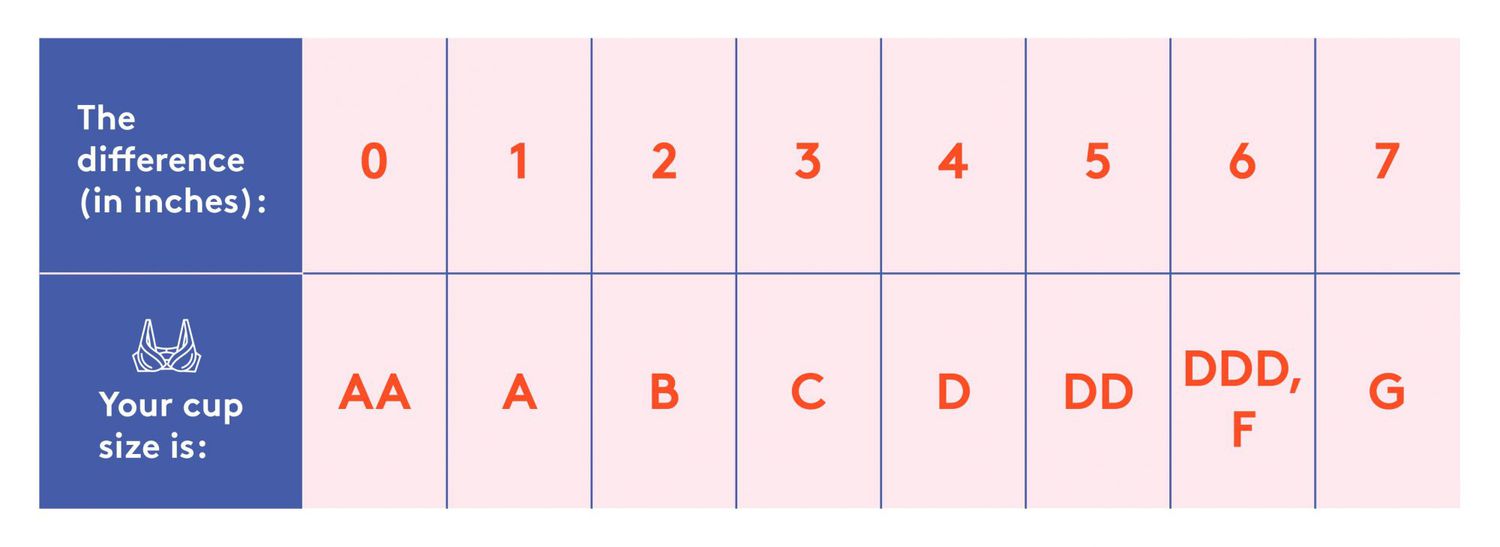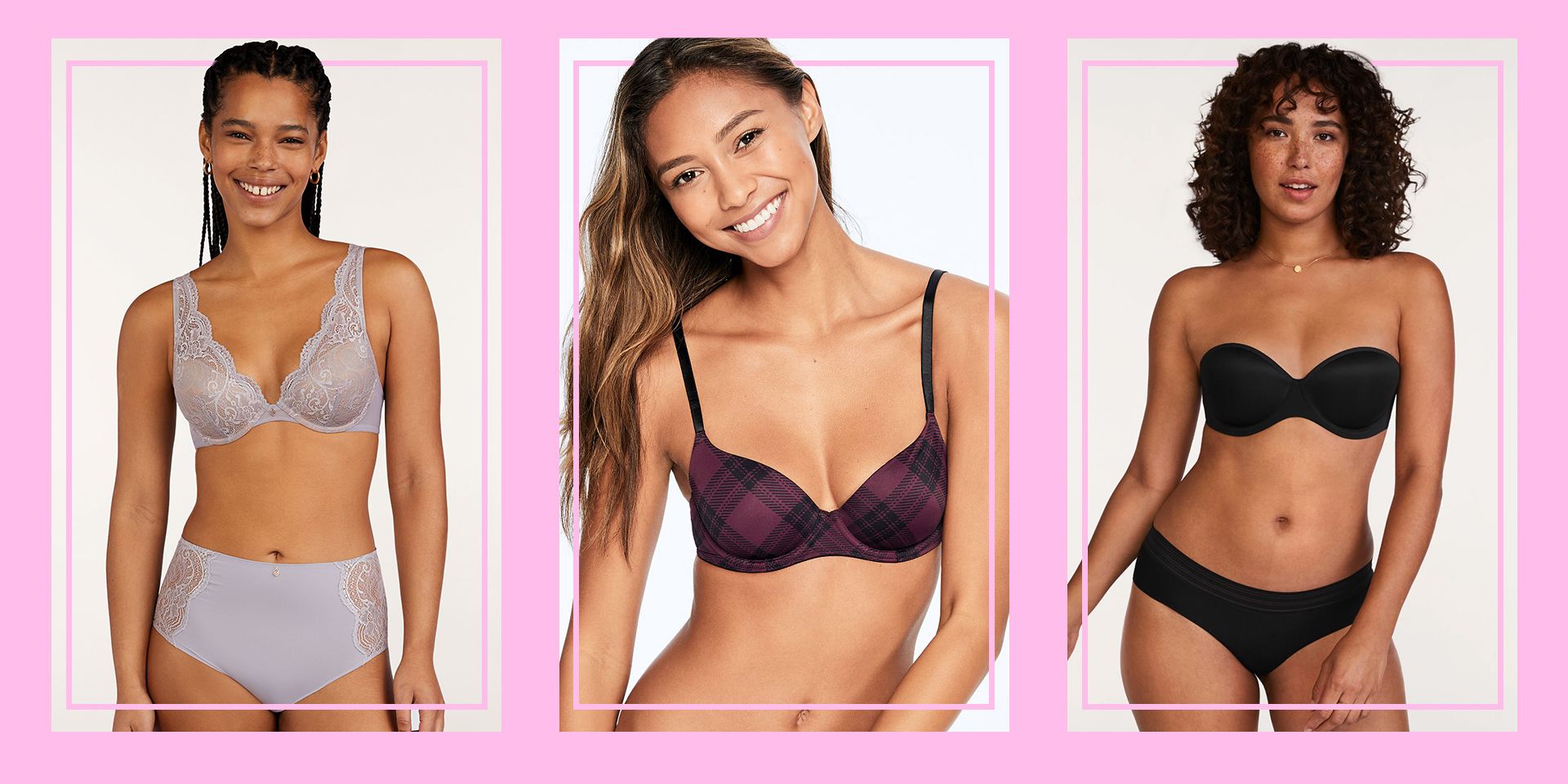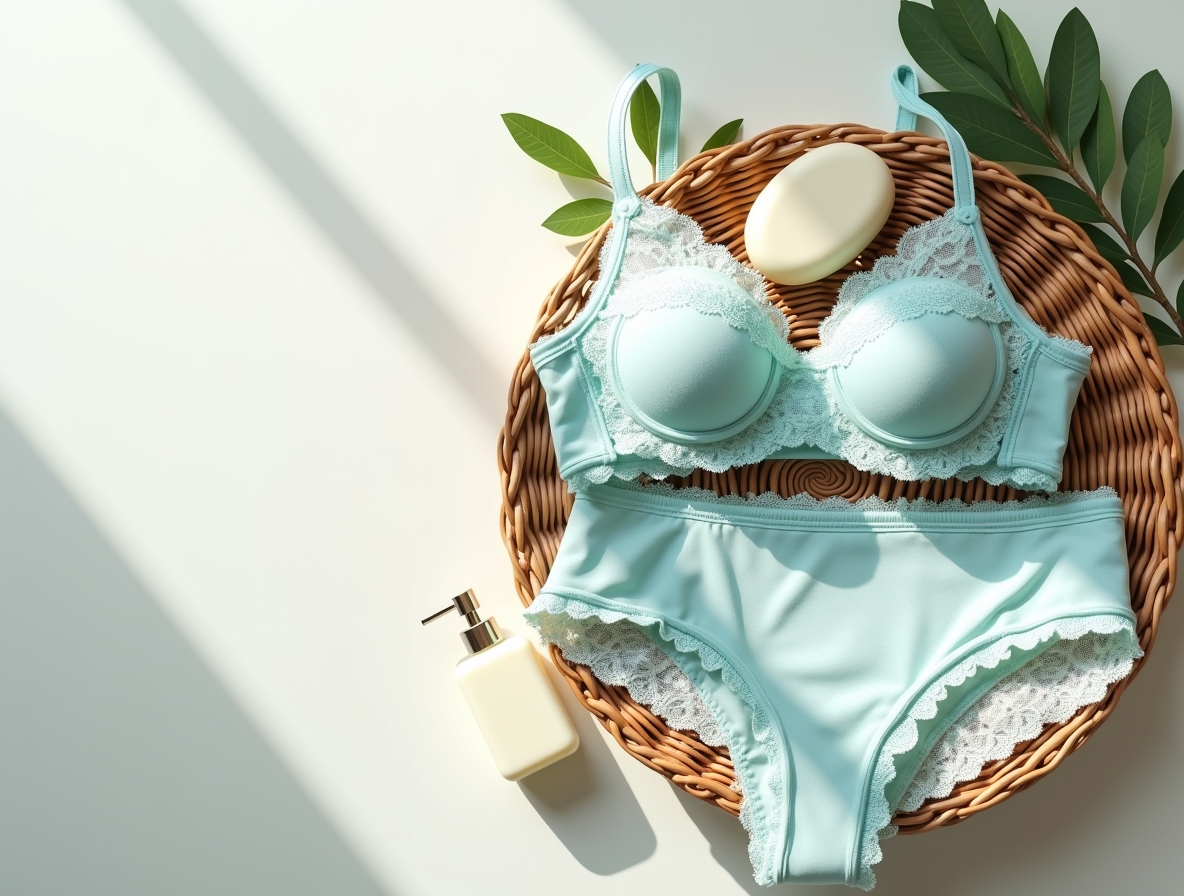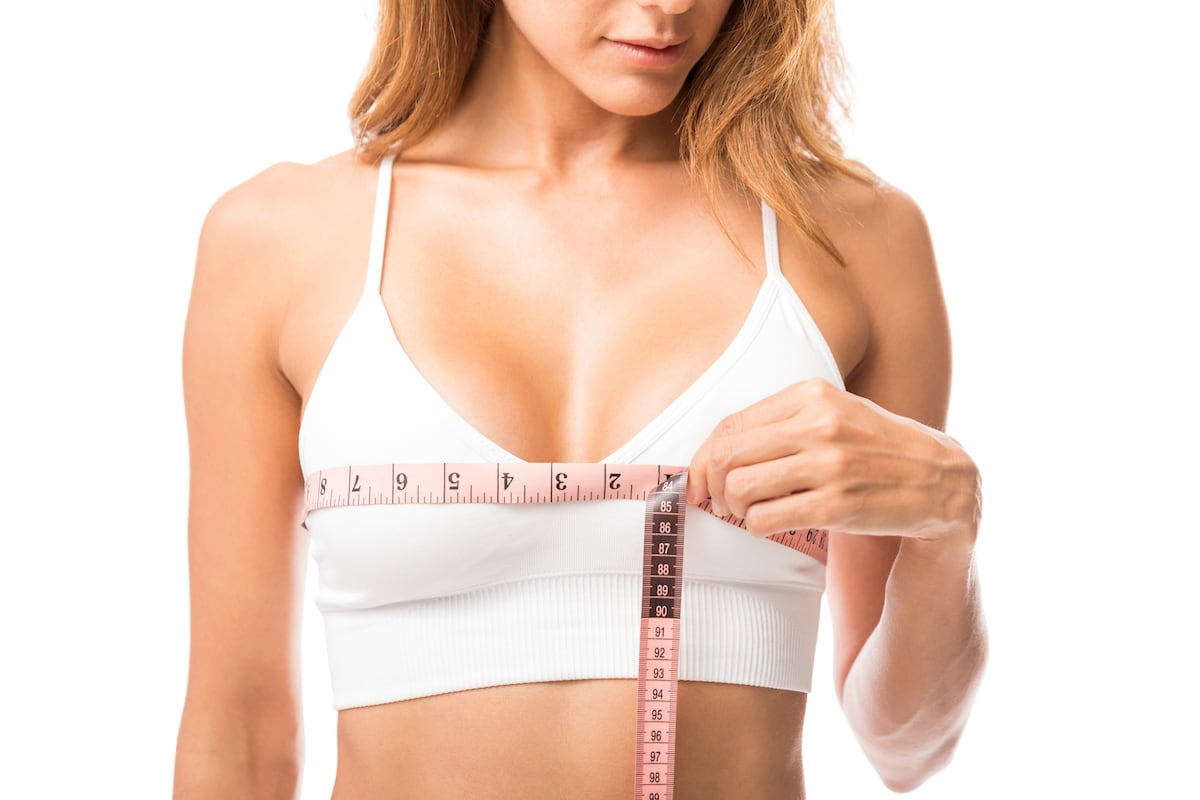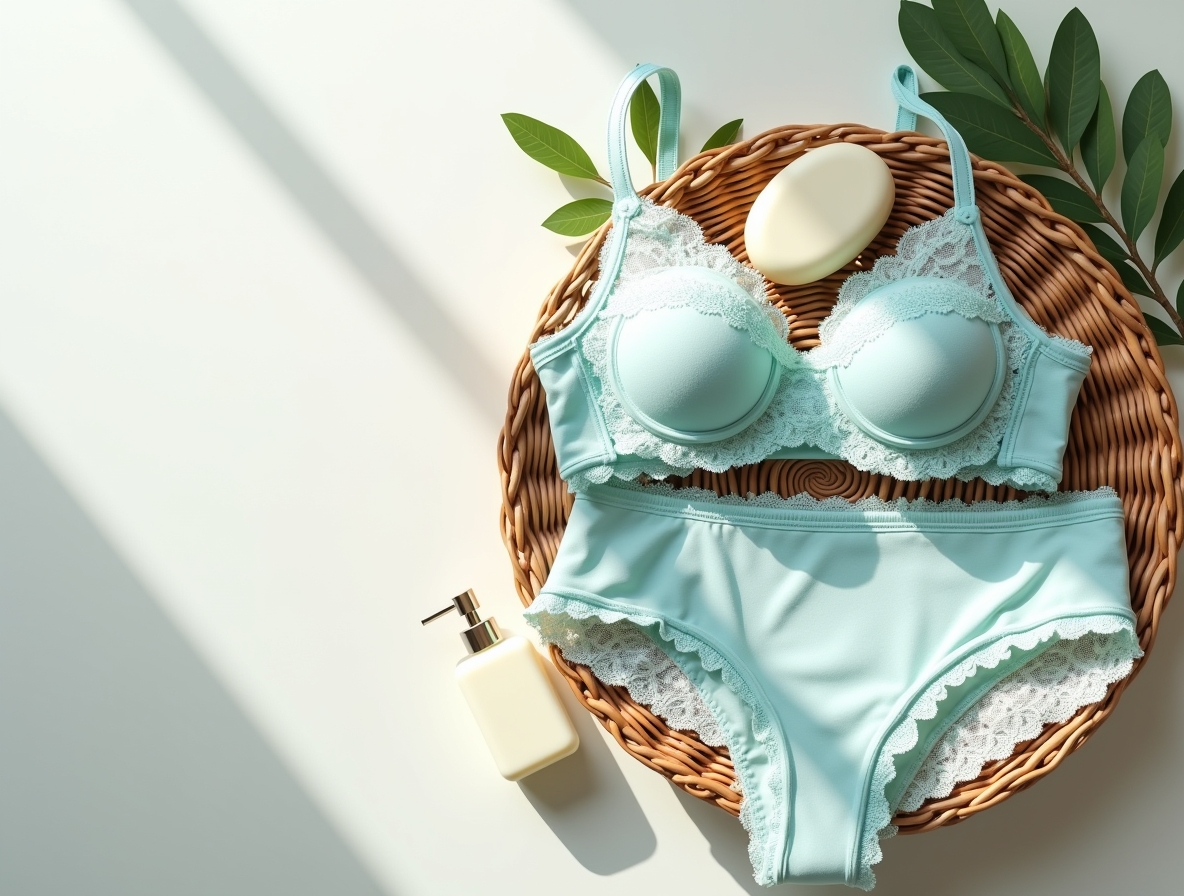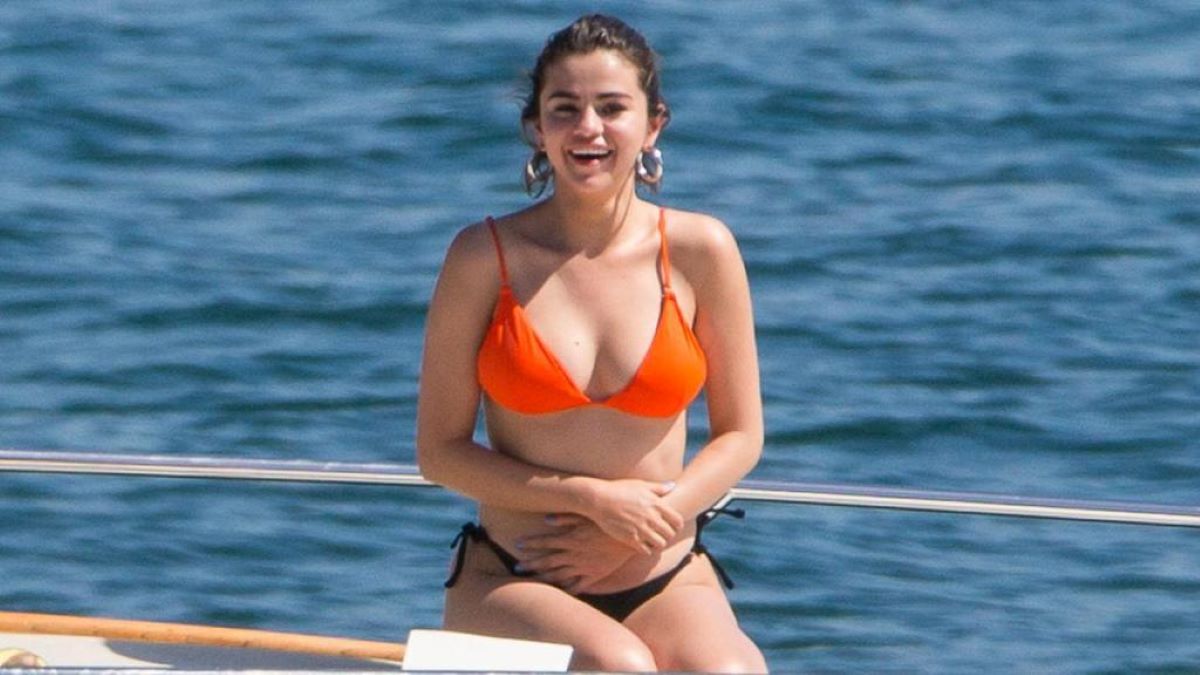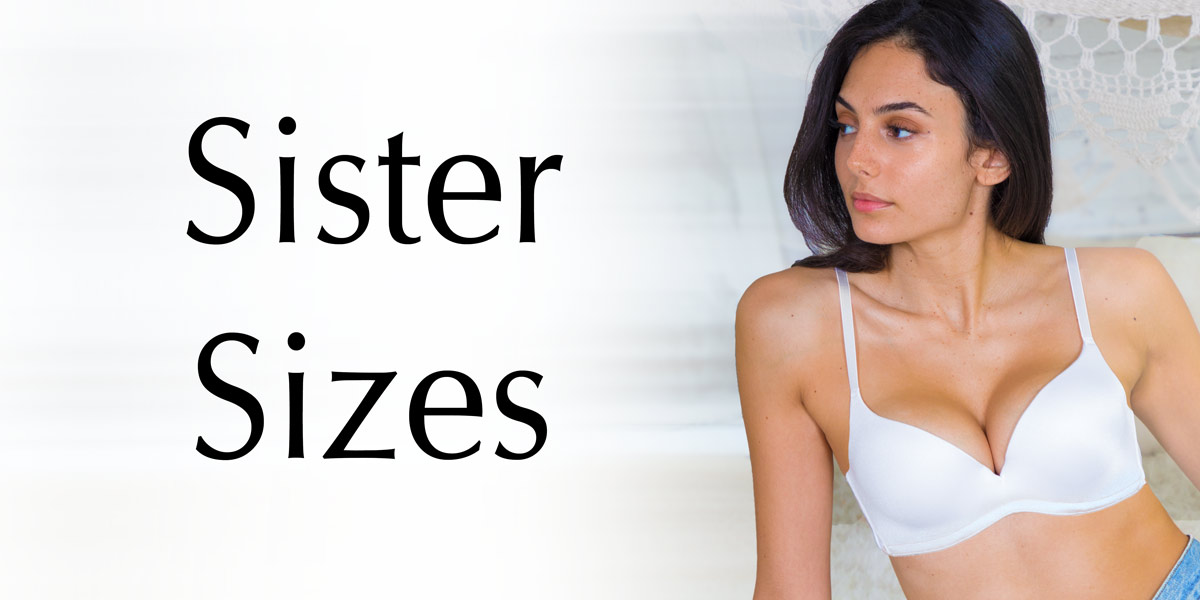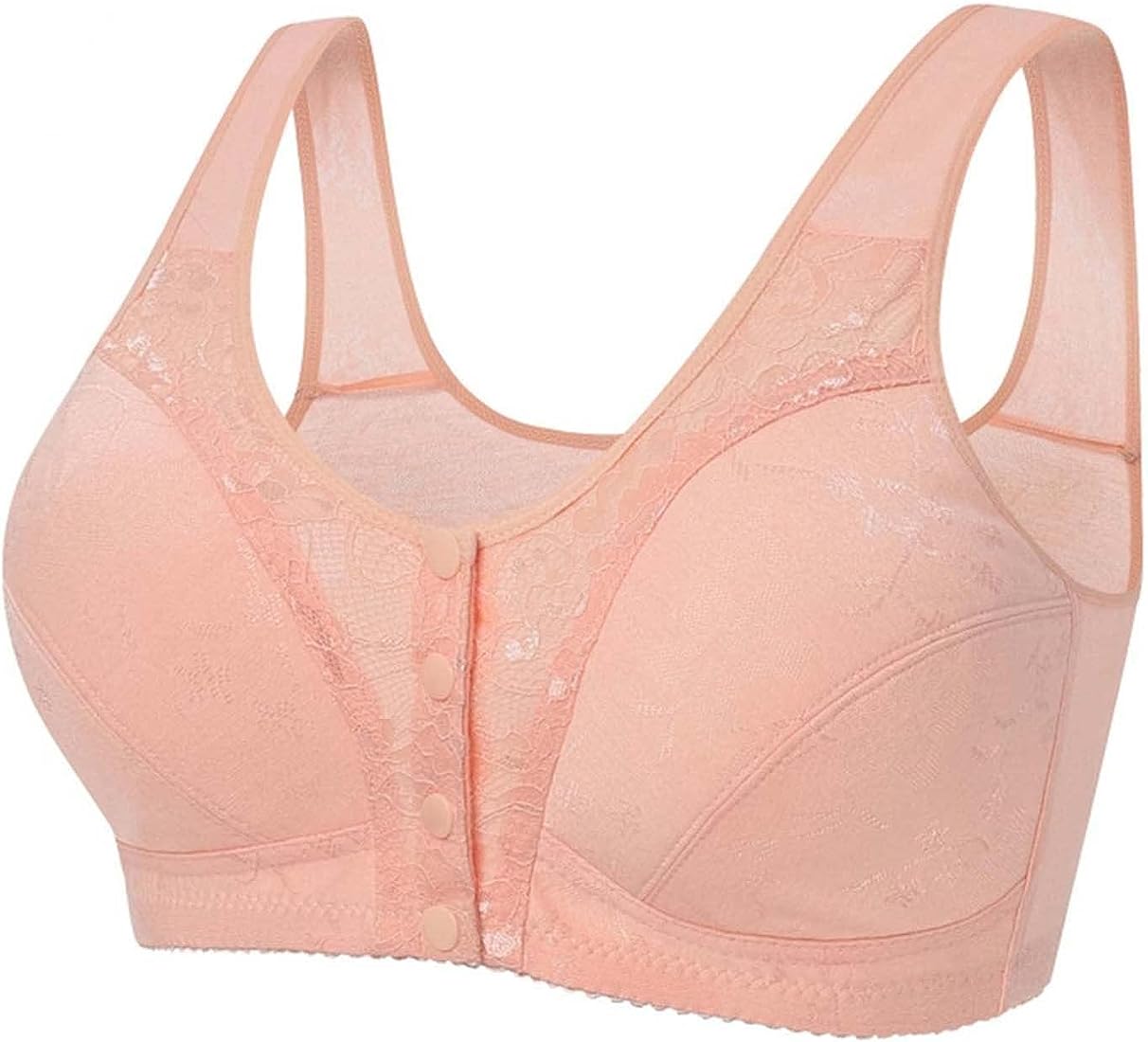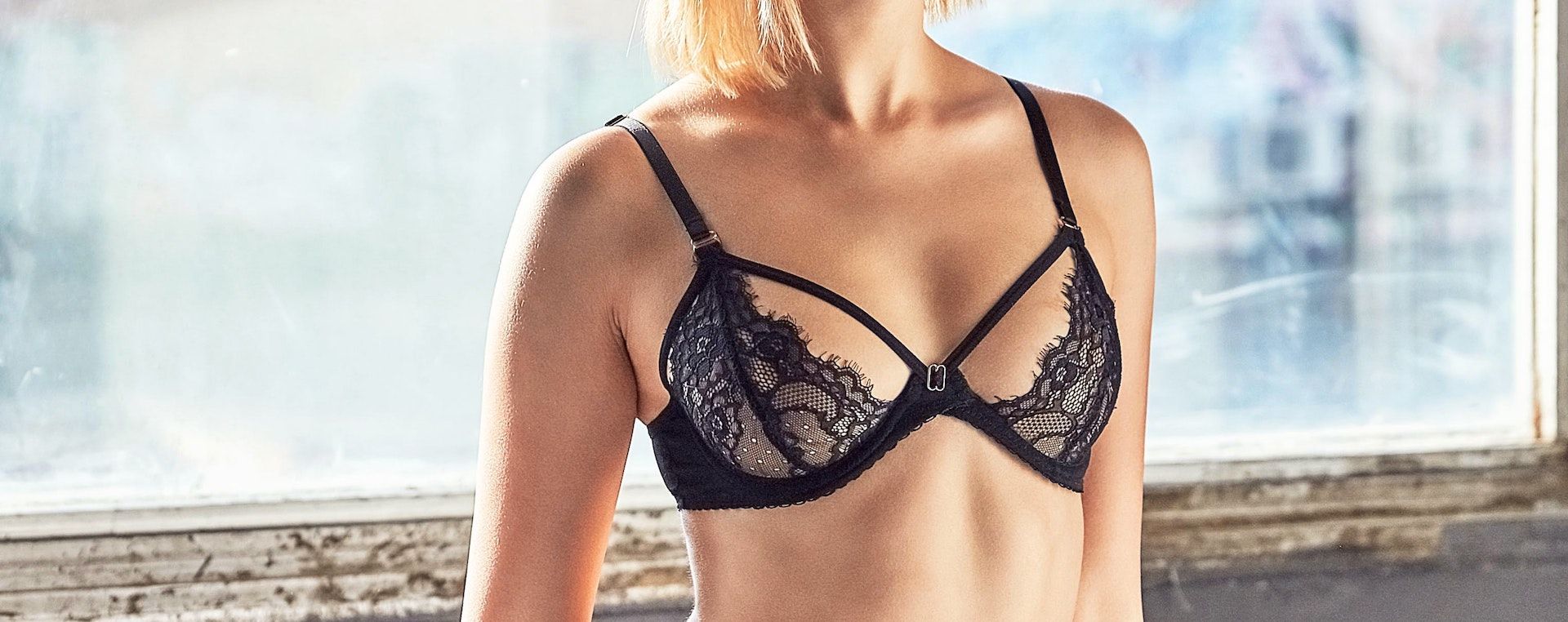Home>Women's Underwear>Bras>What Are The Bra Cup Sizes
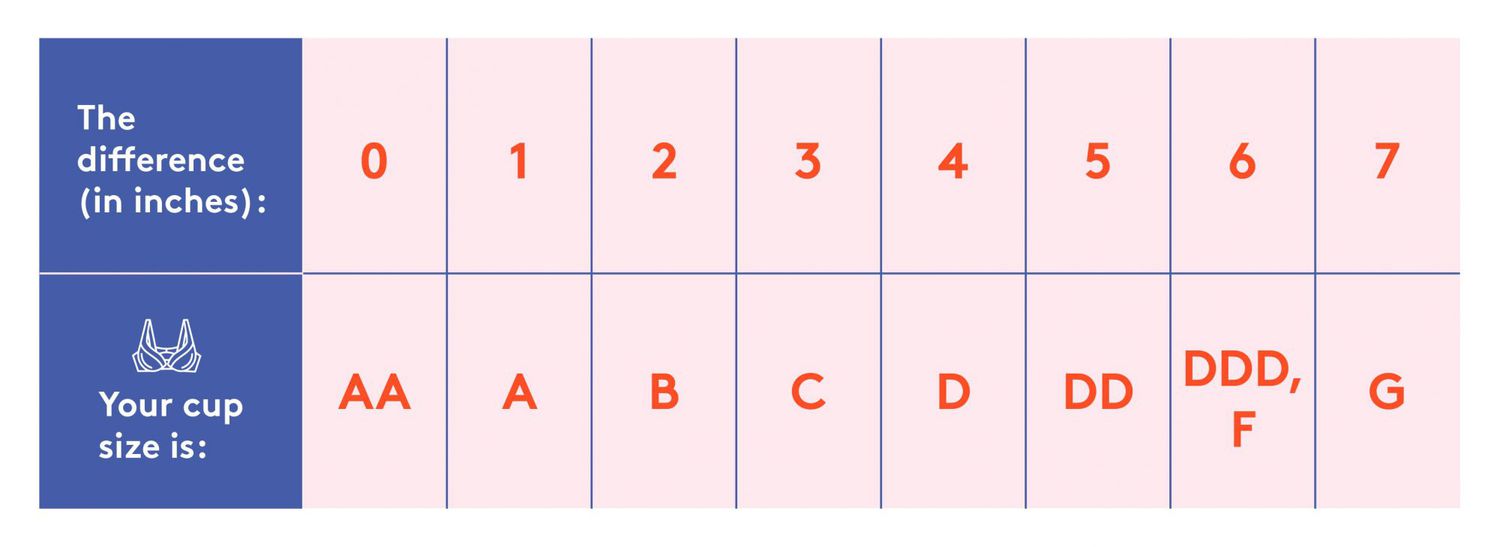

Bras
What Are The Bra Cup Sizes
Modified: September 23, 2023
Discover the different bra cup sizes and how to find the perfect fit. Learn about the importance of wearing the right bras for ultimate comfort and support.
(Many of the links in this article redirect to a specific reviewed product. Your purchase of these products through affiliate links helps to generate commission for Under-tec.com, at no extra cost. Learn more)
Table of Contents
Introduction
Welcome to the world of bras, where comfort, support, and style meet. Whether you’re a lingerie enthusiast or someone looking for the perfect fit, understanding bra cup sizes is essential for a comfortable and flattering look. From A to DD and beyond, bra cup sizes play a crucial role in ensuring that your breasts are properly supported and accentuated.
Do you ever find yourself standing in front of a sea of bras in the lingerie store, not knowing where to start? Or perhaps you’ve ordered a bra online only to find that the cup size doesn’t quite fit as expected. Don’t worry; you’re not alone. Many people struggle with finding the right bra cup size, mainly because there is a wide range of sizes available and different sizing systems used by various brands.
In this article, we will demystify the world of bra cup sizes, explaining what they mean and how they are determined. We’ll delve into the common cup size standards and explore specialty cup sizes that cater to specific body types. Additionally, we’ll provide tips on how to measure your bra cup size accurately and address common fit issues that may arise. So, whether you’re looking to upgrade your bra collection or simply want to enhance your knowledge of bras, read on.
Understanding Bra Cup Sizes
Bra cup sizes are a fundamental aspect of bra fitting. They refer to the volume and shape of the cups that hold your breasts. Each cup size corresponds to a specific measurement, typically represented by letters, such as A, B, C, D, and beyond. However, the cup size is not an absolute measurement on its own; it is relative to the band size of the bra.
Contrary to popular belief, cup size is not a measure of breast size, but rather a measure of the difference between your band size and your bust size. For example, a 34B cup size means that there is a 2-inch difference between the band size (34 inches) and the bust size (36 inches).
Understanding bra cup sizes involves grasping the concept of sister sizing. Sister sizes are different bra sizes that have the same cup volume, but with varying band sizes. For instance, a 34C has the same cup volume as a 32D and a 36B. This means that if you find a bra that fits well in terms of cup volume but feels a bit tight or loose in the band, you can try the corresponding sister sizes to achieve a more comfortable fit.
It’s important to note that bra cup sizes are not standardized across all brands. While the letters A, B, C, etc., remain consistent, the cup volumes may slightly differ. This is why it’s crucial to take proper measurements and try on different brands and styles to find your perfect fit.
Additionally, it’s essential to understand the relationship between band size and cup size. As band size increases, the cup size also increases to maintain the same cup volume. For example, a 36C has a larger cup volume than a 34C, but the cups themselves will have the same shape and proportions.
Now that we’ve laid the foundation of understanding bra cup sizes, let’s explore how these sizes are determined and the common standards used by mainstream lingerie brands.
How Bra Cup Sizes are Determined
The process of determining bra cup sizes involves two key measurements: the band size (the circumference of your torso just below your bust) and the bust size (the circumference at the fullest part of your breasts). These measurements are used to calculate the difference between the two, which determines the cup size.
To get an accurate band size measurement, wrap a tape measure snugly around your ribcage just below your breasts. Make sure the tape measure is parallel to the ground and doesn’t dig into your skin. Round the measurement to the nearest whole number. This measurement will correspond to your band size (e.g., 32, 34, 36, etc.).
The next step is to measure your bust size. Wrap the tape measure around the fullest part of your breasts, ensuring that it is parallel to the ground and not too tight or too loose. Round this measurement to the nearest whole number as well.
Once you have your band and bust measurements, you can determine your cup size by subtracting the band size from the bust size. The difference between the two measurements corresponds to a specific cup size. For example:
- If the difference is around 1 inch, you will typically have an A cup.
- If the difference is around 2 inches, you will typically have a B cup.
- If the difference is around 3 inches, you will typically have a C cup.
- If the difference is around 4 inches, you will typically have a D cup.
- If the difference is around 5 inches, you will typically have a DD cup.
- And so on.
It’s important to remember that these measurements are a starting point, and you may find that you need to try different cup sizes within the same range to find the perfect fit. Additionally, individual body shape, breast tissue density, and personal preferences can also influence the choice of cup size.
Now that we have a basic understanding of how bra cup sizes are determined, let’s explore the common cup size standards used by many popular lingerie brands.
Common Bra Cup Size Standards
When it comes to bra cup sizes, there are several common standards used by mainstream lingerie brands. These standards provide a general guideline for determining cup sizes and ensure consistency across different brands. However, it’s important to note that slight variations may exist, so always refer to the specific brand’s size chart for the most accurate measurements.
One of the most widely recognized bra cup size standards is the ABCD system. In this system, the cups range from A to D, with each letter representing a specific cup size. A cup is typically considered the smallest, while D cup is often considered larger. However, cup sizes beyond D exist as well.
Another commonly used cup size standard is the A-E system. In this system, the cups range from A to E, with A being the smallest and E being larger. This system is popular in European countries and is used by many international lingerie brands.
Some brands, particularly those catering to larger cup sizes, use the DD+ system. In this system, the cups range from DD to K and beyond, with each letter representing a specific cup size. This provides a wider range of cup sizes for individuals with fuller busts.
It’s worth noting that cup sizes are not limited to the letters A, B, C, D, and so on. There are brands that use additional letters, such as AA (smaller than A) and FF (larger than F), to provide more options for different breast volumes.
It’s common for bra cup sizes to increase in volume as the letters progress. However, it’s essential to remember that a cup size alone doesn’t provide the full picture. The cup size is relative to the band size, so a 34B cup will have a different volume than a 38B cup. This is why it’s important to consider both the band and cup size together to achieve the correct fit.
Now that we have explored the common cup size standards used by many lingerie brands, let’s dive deeper into the specific definitions and characteristics of the A, B, C, D, and DD cup sizes.
Defining the A, B, C, D, and DD Cup Sizes
The A, B, C, D, and DD cup sizes are some of the most commonly used cup sizes in bras. Understanding the characteristics of each cup size can help you identify which size may be the best fit for your body.
The A cup size is typically considered the smallest of the range. It is designed for individuals with a smaller bust size, with a relatively small difference between the band size and bust size. The A cup provides minimal coverage and support, making it suitable for those who prefer a more natural and subtle look.
As we move up the cup size range, the B cup provides slightly more coverage and support compared to the A cup. It is an ideal choice for individuals with a modest bust size and offers a gentle lift and shaping effect.
The C cup size is a popular choice and often considered the average or “medium” cup size. It offers a moderate amount of coverage and support, providing a balanced shape and contouring to the breasts.
For those with a fuller bust, the D cup size provides more coverage and support. It offers a generous amount of lift and shaping to enhance the bust line, providing a flattering and more prominent silhouette.
The DD cup size, also known as the double D cup size, is designed for individuals with a significantly larger bust size. It offers even more coverage and support than the D cup, ensuring maximum comfort and containment of the breasts.
It’s important to note that the transition from one cup size to another is not always a strict progression in terms of volume. For example, the difference between an A and B cup may not be the same as the difference between a B and C cup. It’s crucial to try on different cup sizes to find the one that fits your breasts most comfortably and flatteringly.
Remember that the cup size alone does not determine the complete fit of a bra. The band size, strap placement, and overall design of the bra also play important roles in providing the desired level of support and comfort.
Now that we have explored the definitions and characteristics of the A, B, C, D, and DD cup sizes, let’s take a closer look at specialty bra cup sizes that cater to specific body types and needs.
Exploring Specialty Bra Cup Sizes
While the A, B, C, D, and DD cup sizes cover a wide range of breast volumes, there are specialty cup sizes available to cater to specific body types and needs. These specialty cup sizes provide additional options for individuals who may fall outside the standard cup size range.
One such specialty cup size is the petite cup or AA cup. This cup size is designed for individuals with a smaller bust size who may find that the A cup is still too roomy. The petite cup provides a snugger fit and offers enhanced support for those with a smaller frame.
On the other end of the spectrum, there are also specialty cup sizes that cater to a fuller bust. These sizes include the E, F, G, H, and beyond. These larger cup sizes provide ample coverage, support, and shaping for individuals with a more abundant and heavier bust.
Furthermore, some specialty bra brands offer half-cup sizes, such as ½ cup or demi-cup sizes. These cups provide a lower and more revealing cut, giving a seductive lift and accentuating the cleavage. They are a popular choice for special occasions or for those who prefer a more daring and alluring look.
In addition to specialty cup sizes, there are also bras available with specific features to address common fit issues. For example, balconette bras have a lower-cut neckline and wide-set straps to enhance the appearance of the bust and create a rounded and lifted shape. Sports bras, on the other hand, are designed with extra support and compression to minimize bounce and provide comfort during physical activities.
It’s important to explore these specialty cup sizes and bra styles to find the best fit for your body and personal preferences. Trying on different sizes and styles can help you discover the ones that provide the most comfort, support, and flattering look for your unique shape.
Now that we have explored specialty bra cup sizes, let’s move on to learn how to measure your bra cup size accurately to ensure the best fit.
How to Measure your Bra Cup Size
Accurately measuring your bra cup size is essential for finding the perfect fit and ensuring optimal comfort and support. By following these simple steps, you can measure your bra cup size at home:
- Start by wearing an unlined or lightly padded bra that fits well. Avoid wearing thickly padded bras or sports bras, as they can distort the measurements.
- Stand in front of a mirror and position the tape measure horizontally around your torso, just below your breasts. Ensure that the tape measure is parallel to the ground and snugly against your skin, but not too tight.
- Take a deep breath and exhale as you measure. Round the measurement to the nearest whole number. This measurement corresponds to your band size. For example, if the measurement is 33 inches, your band size would be 34.
- Next, measure around the fullest part of your bust, ensuring that the tape measure is parallel to the ground and not too tight or too loose. Again, round the measurement to the nearest whole number.
- To determine your cup size, subtract your band size measurement from your bust measurement. For every inch of difference, you can refer to a general cup size guide:
- If the difference is around 1 inch, you will typically have an A cup.
- If the difference is around 2 inches, you will typically have a B cup.
- If the difference is around 3 inches, you will typically have a C cup.
- If the difference is around 4 inches, you will typically have a D cup.
- If the difference is around 5 inches, you will typically have a DD cup.
Remember that these measurements are a starting point, and you may need to try on different cup sizes and styles to find the most comfortable fit for your unique shape and preferences. Additionally, how a bra fits can vary between brands and styles, so it’s always a good idea to consult the specific brand’s size chart.
By measuring your bra cup size accurately, you can make more informed decisions when shopping for bras online or in-store and increase your chances of finding the perfect fit.
Now that we have covered how to measure your bra cup size, let’s address common fit issues and provide tips for finding the right bra cup size.
Common Fit Issues with Bra Cup Sizes
Finding the right bra cup size can sometimes be a challenging task. Various fit issues can arise, resulting in discomfort, inadequate support, or an unflattering fit. Here are some common fit issues that individuals may experience with bra cup sizes:
- Gapping: Gapping occurs when there is extra space between the cup and your breasts, resulting in a loose or empty appearance. This can happen if the cup size is too big or the shape of the bra is not suitable for your breast shape.
- Spillage: Spillage occurs when your breasts overflow or bulge out of the cups. This typically happens when the cup size is too small or the style of the bra does not provide adequate coverage and support.
- Underwire Digging: If the underwire of your bra digs into your breast tissue or feels uncomfortable, it may be a sign that the cup size is too small. The wire should comfortably encapsulate your breast tissue without pressing into it.
- Quad Boob: Quad boob refers to when your breasts spill over the top of the cups, creating a quadruple breast effect. This is a clear indication that the cup size is too small and it’s time to try a larger size.
- Strap Digging: If the bra straps leave marks on your shoulders or dig into your skin, it may signal that the band size is too big, causing the straps to bear more weight than necessary. Adjusting the straps or opting for a smaller band size can help alleviate this issue.
- Band Riding Up: If the band of your bra rides up your back, it usually means that the band size is too big. The band should rest parallel to the ground and provide a snug, but not tight, fit around your ribcage.
If you encounter any of these fit issues, it’s important to reassess your bra cup size and possibly try different sizes or styles to find a better fit. Everyone’s body and breast shape are unique, so what works for another person may not work for you.
Now that we have explored common fit issues, let’s move on to some useful tips for finding the right bra cup size.
Tips for Finding the Right Bra Cup Size
When it comes to finding the right bra cup size, it’s essential to consider various factors to ensure the best fit and comfort. Here are some helpful tips to guide you on your bra fitting journey:
- Get Professionally Fitted: If you’re unsure about your bra size or have difficulty finding the right fit, consider getting professionally fitted. Many lingerie stores offer expert fitting services where a trained professional can measure you and provide recommendations based on your unique body shape and preferences.
- Take Accurate Measurements: When measuring yourself at home, make sure to follow the proper measuring techniques outlined earlier in this article. Pay attention to guidelines such as wearing the right bra and using a tape measure that is parallel to the ground.
- Try Different Brands and Styles: Remember that not all brands and styles will fit the same, even within the same cup size. Be open to trying different brands and styles to find the one that suits your body shape and breast type best.
- Consider Sister Sizes: If you find that a particular cup size is too small or too big, try exploring sister sizes. Sister sizes have the same cup volume but vary in band size. For example, if a 34C feels too tight, you can try a 36B for a more comfortable fit.
- Pay Attention to Band Size: Remember that the band size and cup size work together to provide proper support. Ensure that the band fits snugly around your ribcage without riding up or digging into your skin. Adjust the band size accordingly to achieve the optimal fit.
- Listen to Your Body: Ultimately, your comfort and satisfaction should be the priority. Pay attention to how a bra feels on your body throughout the day. If you experience any discomfort, adjust the size or style accordingly to find a better fit.
- Try Different Cup Shapes: Different bra cup shapes, such as full coverage, balconette, or plunge, can affect the fit and appearance of the bra. Experiment with different cup shapes to find the ones that complement your breast shape and provide the desired level of support and coverage.
- Regularly Reassess Your Size: It’s important to keep in mind that our bodies can change over time due to factors such as weight fluctuations, hormonal changes, and age. Therefore, it’s a good idea to reassess your bra size every six months to a year to ensure that you’re still wearing the correct size.
By following these tips and being patient with the process, you can increase your chances of finding the right bra cup size that not only provides the support and comfort you need but also makes you feel confident and beautiful.
Now that we’ve explored tips for finding the right bra cup size, let’s conclude our journey through the world of bra cup sizes.
Conclusion
Understanding and finding the right bra cup size is an essential step in ensuring comfort, support, and confidence in your lingerie. From A to DD and beyond, bra cup sizes play a vital role in complementing your natural shape, enhancing your silhouette, and allowing you to feel your best.
Throughout this article, we have explored the fundamentals of bra cup sizes, including how they are determined, common cup size standards, and specialty sizes that cater to specific body types. We have also discussed tips for accurately measuring your bra cup size, addressing common fit issues, and finding the perfect fit for your unique shape and preferences.
Remember, your bra cup size is just one aspect of finding the right fit. It’s important to consider factors such as band size, strap placement, and the style of the bra to achieve optimal comfort and support. Additionally, finding the perfect bra may require trying on different brands, styles, and sizes to find what works best for you.
Whether you’re shopping online or in-store, remember to consult size charts, seek professional fittings if needed, and listen to your body’s signals to ensure a proper fit. Regularly reassessing your bra size is also important as our bodies can change over time.
Now armed with the knowledge of bra cup sizes, go forth with confidence and embrace the world of bras in all its styles, shapes, and sizes. Finding the perfect bra that fits you like a glove can make all the difference in your comfort, confidence, and overall well-being.
So, say goodbye to ill-fitting bras and hello to the perfect cup size that accentuates your beauty, supports your breasts, and leaves you feeling comfortable and confident all day long.
